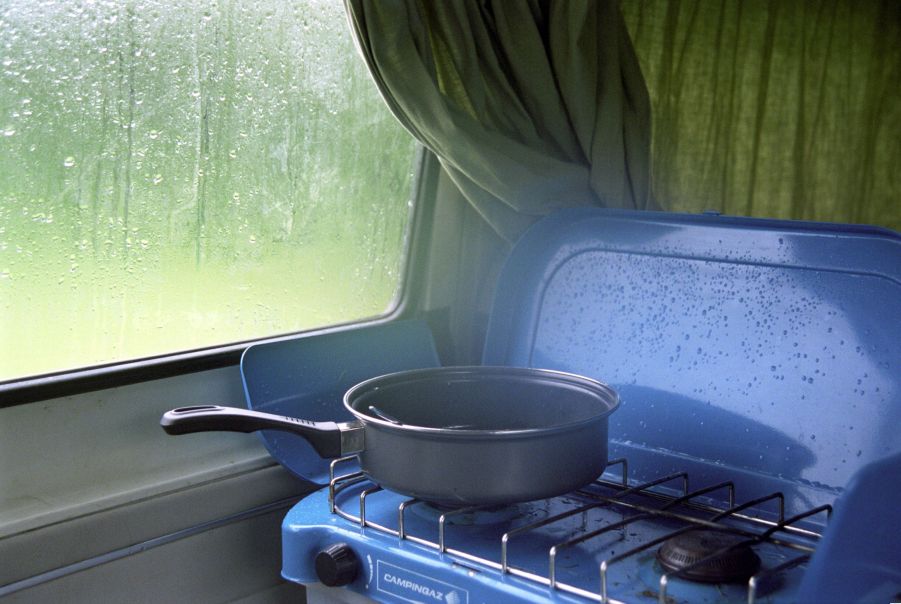
How Do You Install a Stove in Your Camper Van?
There’s a long list of things to keep track of when building your camper van RV. Sleeping arrangements, storage spaces, and potentially a bathroom are just part of that list. And, if you plan on adventuring in the cold, you need to consider insulation, and possibly a stove. But installing a camper van stove doesn’t have to be intimidating. Here’s what you need to know before you take the project on.
You have some choices when it comes to camper van and RV stoves
It’s important to note that there are 2 kinds of camper van stoves, Outside explains. There are cooktop stoves for, well, cooking on, and stoves specifically for providing heat. The latter are sometimes called furnaces, Outside reports, and they’re not the same as water heaters, Camplify reports.

Camper van cooking stoves work the same way as home-installed cooktops and have similar energy sources. You can get pure-electric induction cooktops, or install a range fueled by natural gas, propane, or butane, The Wayward Home reports.
Gas stoves require a dedicated fuel tank, while you need solar panels and onboard batteries to power an induction cooktop. There is an upside to gas-powered stoves, though: if the electricity fails, you can still light the gas with a lighter or a match.
There are also a few different fuel sources you can pick from when looking at camper van stoves designed for heating. Just like with cooktops, some are powered by gas or electricity, Parked in Paradise reports.
However, you can also install a wood-burning stove in your camper van, Van Clan reports, or even a diesel-powered one. And in addition to heating the surrounding area, these types of stoves can also dry clothing and keep food and beverages warm. Plus, it works as an extra light source, Salamander Stoves reports.
What tools and materials do you need to give your camper van a stove?
There’s one more camper van choice that you need to make before picking up any tools: portable or static.
Some cooktops and heaters are portable, Kombi Life explains. Something like a wood-burning stove has to be fixed in place, as does an induction cooktop wired to the van’s electrical supply. However, there are portable gas and induction cooktops available, as well as portable space heaters. They still take up space inside the van, but you won’t have to do any cutting, drilling, or similar heavy work.
If you’re installing a stove in your camper van, one way to ease the installation is to invest in a combination sink-cooktop, Outside reports. That way, when you’re assembling and cutting into your countertop, you only need to make one hole, not two.
Installing a camper van stove, whether cooktop or furnace, doesn’t require any more tools than necessary for the whole build, Outside reports. You’ll need some screwdrivers, a power drill, a jigsaw, and a circular saw. If you’re installing a gas-powered cooktop, you’ll need the fuel tank, somewhere to put it, and the requisite gas lines. For an induction stove, you’ll either have to wire directly into the power supply or install a socket to plug it into.
Putting in a wood-burning stove requires a bit more prep-work, Outbound Living reports. You’ll have to cut a hole in the roof for the flue and install the necessary flue piping. A wood-burner also needs a heat-proof stand and backing, a chimney rain cap, and sealant for the hole in the roof.
What else do you need to consider?
For wood-burning camper van stoves, Outbound Living recommends getting a thermoelectric stove fan to improve warm air circulation. Also, since you have a fire in a contained space, a carbon monoxide detector is a must.
Overall, consider your budget, space, and time when tackling a camper van stove installation, Outside recommends. You don’t need the biggest, flashiest cooktop—you may not even have the room for it. And while a portable heater requires no installation on its own, if your van doesn’t have a socket, you’ll need to install one.
Follow more updates from MotorBiscuit on our Facebook page.


